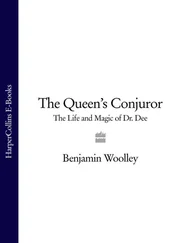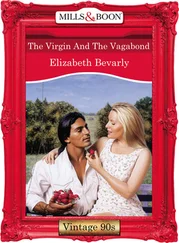Being allowed to mingle with them provided the curious Englishmen with their first proper exposure to female company since leaving London. The effect was powerful. The women appeared natural and unaffected. They had ‘handsome limbs, slender arms, and pretty hands; and when they sing they have a delightful and pleasant tang in their voices’. They wore make-up to enhance their features rather than disguise their blemishes, and shared cosmetic tips and recipes freely, unlike the ‘great ladies’ of English society, who kept secret from one another ‘their oil of talcum or other painting white and red’. The Indian women wore clothes not to hide their age, but, as Captain Smith put it, to be ‘agreeable to their years’. Their bodies were not trussed, bustled and costumed, but flaunted. Their arms, thighs and breasts could be openly admired, being elaborately advertised with ‘cunningly embroidered’ tattoos. They were ‘voluptuous’, fully developed sexual beings, scantily dressed and approachable, yet retaining that feminine virtue most vaunted by European men, ‘modesty’. It was a combination that aroused the Englishmen’s imaginations and starved libidos.
Mothers breast-fed their babies, a practice that English women of all but the poorest classes avoided, favouring the use of wet-nurses. They also loved their children ‘very dearly’, but were tough as well as tender, making them ‘hardy’ by washing them in the river even on the coldest mornings, and ‘tanning’ their skins with ointment until ‘no weather will hurt them’. Their houses, Smith observed, were as ‘warm as stoves, but very smoky’, due to the fire in the centre of the floor, which vented through a simple hole in the roof. It being summertime, the mats covering the walls may have been rolled up to let in the air, but the women continued to tend the fire, as, ‘if at any time it goes out, they take it for an evil sign’.
A set of simple bedsteads was the only recognizable domestic furniture to be found inside an Indian house. They were made of short posts stuck into the ground, with ‘hurdles’ or frames made with sticks and reeds placed on top to act as the mattress. There was a bed for each member of the family, upon which they would sleep ‘heads and points’, head to feet, in a circle around the fire. Mats acted as bedlinen, and, while they slept, the perpetual smoke, which darkened their skins but did not sting their eyes, kept away mosquitoes and fumigated clothes. 19
While he was being shown around one of the huts, an Indian woman took Archer’s hand and pressed the leaves of a herb into his wounded palm. The plant was wisakon , he was told (the word was in fact a general term for medicinal herb). It looked to him like liverwort or bloodwort, two well-known medicinal herbs used in England. He was also shown a root which contained the poison that had laced the arrowheads.
The visitors watched the women bake rolls and cakes, and a demonstration of ‘the growing of their corn and the manner of setting it’. The fields, just a few hundred foot square, were more like gardens, cleared by burning sections of the surrounding woodland. The soil was neither cultivated (the Indians had no draft animals or tilling equipment) nor manured, producing, in the opinion of Smith the farmer’s son, ‘so small a benefit of their land’. He was sure the most basic English agricultural techniques would multiply the yields. 20
Finally, the chief took the English into what Archer dubbed the ‘Mulberry Shade’, a hunting lodge set apart from the village, where King Arrohateck laid on a meal of ‘land turtle’ while his men went into the surrounding woods to see if they could catch a deer. The chief also asked for a demonstration of English firearms. Newport duly ordered ‘a gentleman discharge his piece soldier-like before [King Arrohateck], at which noise he started, stop’d his ears, and express’d much fear, so likewise all about him’.
There was also an incident, confusingly documented, which enabled the two nations to compare their methods of summary discipline. Navirans drew attention to one of Arrohateck’s people who, as Archer put it, ‘press’d into our boat too violently upon a man of ours’. Newport, ‘misconstruing the matter, sent for his own man, bound him to a tree before King Arrohateck, and with a cudgel soundly beat him’. The chief intervened, saying one of his men was responsible for the ‘injury’. He went over to the culprit, who tried to run away. The chief set off in pursuit, running ‘so swiftly as I assure myself he might give any of our company 6 score in 12’ (i.e. beat them ten times over). The offender was brought back, and the rest of the king’s retinue brandished cudgels and sticks ‘as if they had beaten him extremely’. Archer does not mention if the punishment was actually executed, or only threatened.
These violent proceedings did not dampen the convivial mood, but seemed to draw the two leaders, Newport and King Arrohateck, closer together. As the day drew to an end, Newport presented the chief with a red waistcoat as a farewell gift, ‘which highly pleased him’. The English boarded their shallop and cast off, the Arrohateck men saluting them with two hearty shouts as they pulled away from the shore.
That night, they anchored near Appamattuck, home of those ‘most warlike’ people Newport had visited while reconnoitring the site of the English settlement. The following day, they went ashore and were led by Navirans through fields newly planted with corn to a ‘bower’ of mulberry trees. They sat down to await the Appamattuck chief, but were instead surprised by the regal approach of a ‘fat, lusty, manly woman’ clothed in deerskin, covered in copper jewellery, including a crown, and attended by a retinue of women ‘adorned much like herself, save they wanted the copper’. This, the English decided, must be a queen, as she was treated with the same reverence as the Powhatan and Arrohateck chiefs, ‘yea, rather with more majesty’. Her name, though they did not yet know it, was Opussoquonuske. 21
The English, struggling to readjust their assumption that Indian royalty must be exclusively male, were anxious to discover her role. She explained that she was a chief under the authority of Powhatan, ‘as the rest are’, but the visitors noted that ‘within herself’ she was ‘as great authority as any of her neighbour weroances ’, if not greater. For two hours the English gazed upon this Indian Elizabeth, while feasting on the ‘accustomed cakes, tobacco, and welcome’. They offered to demonstrate their weapons, and Archer noted that, when a musket was fired, ‘she showed not near the like fear as Arrohateck’. Newport then decided they should leave for the final leg of their expedition.
Navirans led them 5 miles downstream, and persuaded them to put in for one final meeting. The location, he said, was ‘one of King Pamunkey’s houses’, a structure that may have been a hunting lodge, or even specially constructed for the occasion, as the Pamunkey homeland lay 20 miles away, along the banks of a river neighbouring the James. The English seemed unaware that such encounters were now being carefully orchestrated, nor did they realize the importance of the man they were about to meet. He was Opechancanough, whose name meant ‘man of a white (immaculate) soul’. Later described as possessing a ‘large stature, noble presence, and extraordinary parts’, he was said by some to be Powhatan’s brother, but by others to have come from ‘a great way from the south-west … from the Spanish Indians, somewhere near Mexico’. In his forties at the time of this first encounter, he acted as the military chief of Tsenacomoco, the Indian name for the Powhatan empire. He had come to meet the English to assess their intentions and strength. 22
Читать дальше












